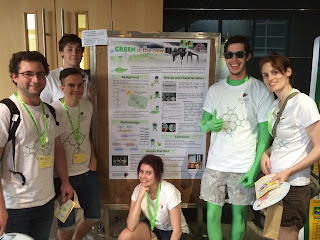It's been a struggle recently to find time to blog. Last week I was away at
BacPath, an Australian conference on the Molecular Analysis of Bacterial Pathogens. My cunning plan of live blogging from the conference was foiled by the fact there was practically no internet connections available at the meeting. I guess that's one of the downsides of having the meeting located on a sub-tropical island paradise (well Moreton Island anyway).
BacPath is one of my favourite scientific meeting, and in many ways reminds me of a
Gordon Research Conference. Several features about BacPath I particularly like-
1. The relatively small size of the conference (150-180 people), which really gives you an pportunity to mix with and meet many of the delegates.
2. The fact that the meeting is always held at a relatively isolated location, so all of the delegates spend their entire time at the meeting, you end breakfast, lunch and dinner together, providing many opportunities to network, discuss science, arrange collaborations, etc.
3. The philosophy that junior scientists (PhDs students and postdocs) should give the vast majority of presentations rather than senior scientists.
In the interests of full disclosure I should say I was a member of the organizing committee for the
2011 BacPath meeting. BacPath is held once every two years, with each state taking a turn to host the meeting. In 2015 it will be Victoria's turn. This year it was in a lovely location, though sadly I think I set foot on the beach for about 10 minutes, although I should point out that I hand fed a dolphin in that 10 minutes.
There was a great set of talks at the meeting. Highlights for me included Cynthia Whitchurch's talk with beautiful videos of how exploding bacteria help bacterial biofilms develop. Also, Mike Jennings, the invited speaker for an Outstanding Contribution by an Australian Researcher, gave a great talk on phase variation of human pathogens. There were many other great talks at the meeting from Dena Lyras, Tim Stinnear and many others. Karl Hassan from my group gave a talk on a new type of drug efflux pump we've discovered.
The main problem with BacPath is at the end of it I'm always exhausted, as the talks start at 8.30 in the morning and the conference runs to 11 pm every night with poster sessions in the evening accompanied with alcoholic inducements for scientific discussion.
 |
| Moreton Island- its all made of sand |


